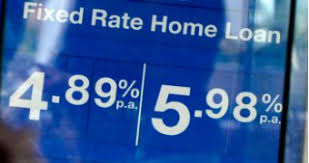 A ‘Fixed Rate’ home loan is one whereby your interest rate is locked in (ie fixed) for a certain period. Thus loan repayments will be charged at the same rate for however long the fixed rate period is – typically between 1 and 10 years. At the end of the term, the rate will revert to the variable rate of the day, unless you re-fix the loan. Fixing your loan gives you certainty of what your repayments will be and you can confidently plan your future.
A ‘Fixed Rate’ home loan is one whereby your interest rate is locked in (ie fixed) for a certain period. Thus loan repayments will be charged at the same rate for however long the fixed rate period is – typically between 1 and 10 years. At the end of the term, the rate will revert to the variable rate of the day, unless you re-fix the loan. Fixing your loan gives you certainty of what your repayments will be and you can confidently plan your future.
Fixed loans are exactly that – a contract between you and the lender for a fixed period of time. They are subject to break costs, should you want to get out of the loan sooner than the contracted period. The reason for this is that the financial institutions involved often sell these loans to a third party. For example your superannuation funds may buy a parcel of these as an investment. This means that to break the contract will affect these third parties and the financial institution will itself incur similar costs.
The banks are not able to determine the exact break cost as it is dependent on a number of factors, for example:
- The stage you break the fixed period; earlier would mean a longer period subject to the break.
- What interest rates have done in the interim. For example if rates have increased, then there will not necessarily be as big a break cost as if interest rates had decreased.
- There will always be a small administrative element.
For compliance reasons we are not able to advise on fixed rates (that is: whether or not it is a good idea to fix your loan) because it is impossible to predict the future. However you do have the ability to fix a portion of the loan and keep a portion of the loan variable depending on your circumstances.
Different lenders have different fact sheets on break costs, which can be found on their websites.
For further information, please contact us.
